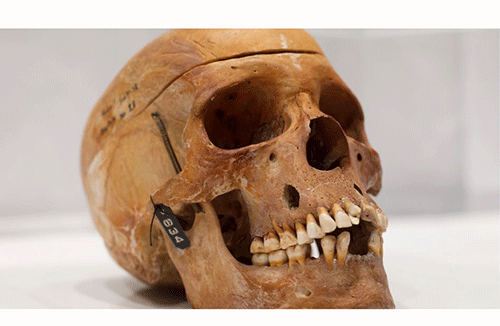The University of Strasbourg in France has agreed to kickstart the process of identifying and verifying the origins of its various collections of human skulls, bones and other artefacts.
The primary aim of this exercise is to return artefacts whose origin can be traced back to Namibia.
The latest admission and acceptance by the University of Strasbourg to return the human remains follows years of sustained pressure from the Ovaherero Genocide Foundation (OGF).
The OGF has been demanding and calling on all European museums and universities to return human skulls, bones and other objects that were taken from Namibia during the colonial era.
In March this year, OGF again reiterated their growing demand for the unequivocal return of all human remains obtained through the massacre of Ovaherero and Nama people by German troops during the 1904/08 genocide, which is considered the first genocide of the 20th century.
Utjiua Muinjangue, one of the leading activists and voices in the ongoing Ovaherero/Nama genocide campaign, expressed great delight with the latest progress in their fight for total restitution for the crimes committed against Namibians.
She said France and Germany are just a few of such places, as they also plan to go as far as Austria and the USA, where skulls of Namibians are also said to be.
Established in 1538 in the northeastern town of Strasbourg, the university is one of the biggest and oldest public research universities in Europe.
It remains a great part of the history of the Franco-German War of the 1800s, which saw the rise and fall of German emperor Kaiser Wilhelm II.
The Radio France Internationale (RFI) also revealed in a report that the university has set up a scientific council, whose task is to provide accurate information on the origins of the human remains in its collections, which date back to the colonisation of Africa under German and French rule.
Namibia’s request, through the OGF, for the return of human remains has inspired the people of Tanzania.
They have since launched a campaign, seeking the return of remains belonging to the Wachagga people from around Mount Kilimanjaro, who were killed during the same era of German rule after resisting colonial oppression.
“We are living in a period where we are looking back at our colonial past and attempting to address it. Holding on to objects and human remains obtained during colonisation might be a problem if we want to have a peaceful dialogue between Europe and Africa.
“That’s why if we have a request from Africa, we cannot ignore it. We have to engage in a dialogue to understand what they want, and undertake a scientific evaluation of what we have and what happened.
Only then can a proper restitution take place, as long as it is legally possible to do so,” Mathieu Schneider, the vice-president of the University of Strasbourg and chair of the scientific council, told RFI.
Pseudoscience psychosis
At the time, the Germans collected skulls and bones to support a pseudoscientific theory that supposedly prove the supremacy of the Caucasian or white race over African or black people.
This narrative was based on the idea that skull shape and size were indicators of ethnic origins and mental abilities.
“Approximately 30 of them come from Tanzania, especially from the Wachagga tribes, and we may have two or more skulls from the Ovaherero. The process of gathering more information on the remains will be a lengthy one. We need to have detailed information on each human remains. We have an existing catalogue, telling us that such skulls come from either Namibia or Tanzania. But we have to verify everything,” Schneider stated.
The University of Strasbourg has over 110 human artefacts – skulls and bones – in its collection that were obtained during Germany’s colonisation of Africa in the late 19th and early 20th centuries, which covered large territories, including modern-day Burundi, Rwanda, Tanzania, Namibia and parts of Ghana, Togo, Cameroon and Mozambique.
Schneider fully believes and agrees that Strasbourg University needs to confront the most difficult parts of its history.
“In the last five years, we have undertaken important work to find out what exactly happened within the walls of the university when the Nazis were there during the Third Reich in the 1940s. We also need to confront our colonial past, especially the 19th century when the Germans colonised parts of Africa.
We have traces of that period in our collections, so if we want to write a truthful history of our university, we need not only to face the period of the Third Reich but also the period before,” he added.
– ohembapu@nepc.com.na


